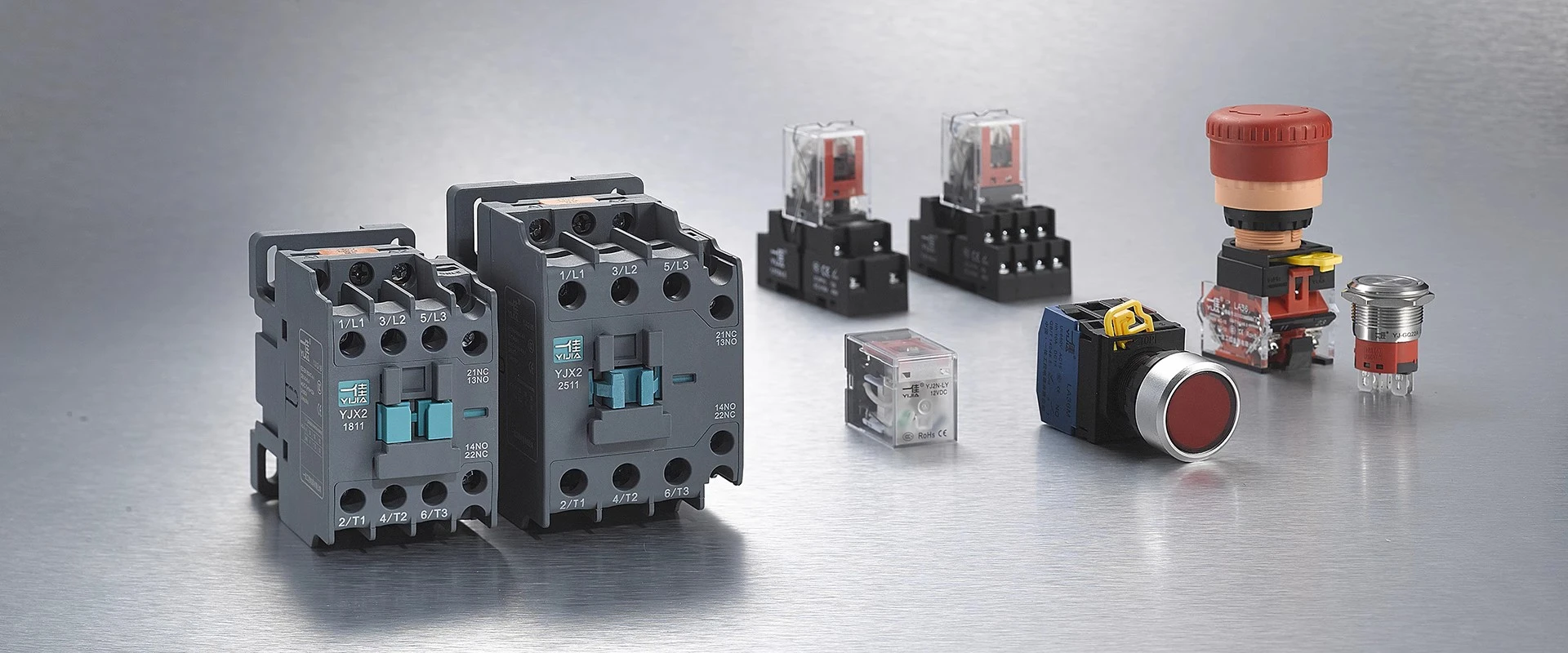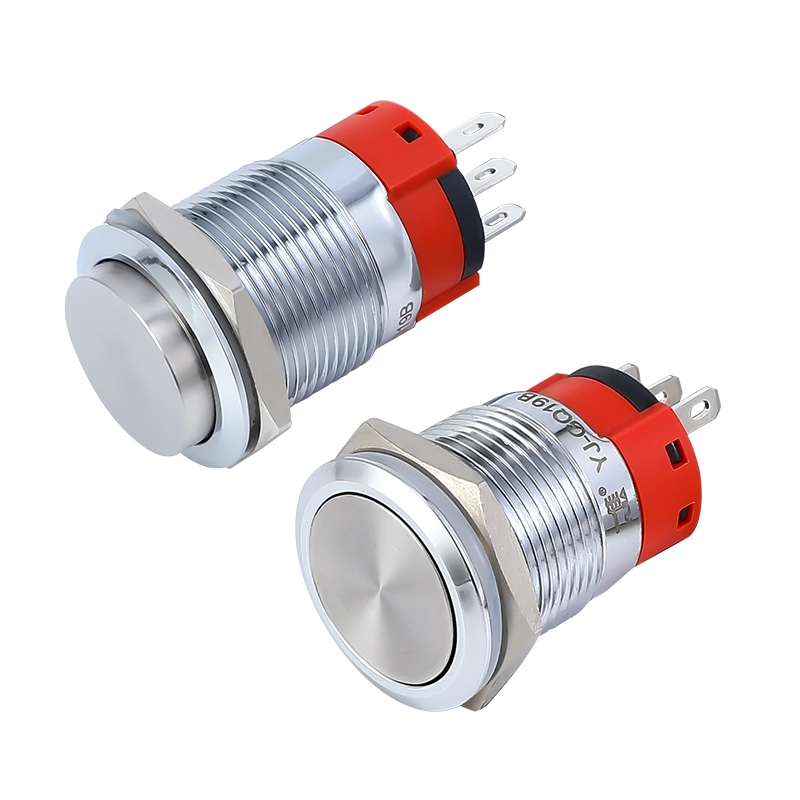One article to understand the automotive relay switch
What is an automotive relay switch?
An automotive relay switch is an electrical control device that is primarily used to open or close paths in a car’s electrical circuits, allowing current to flow between different parts. Its basic function is to use a smaller current to control a larger current, thereby making the operation safer and more efficient.
In automobiles, relay switches are used extensively, including controlling headlights, fans, air conditioning systems, electric windows, etc. They are able to handle high current loads without the need to load such large currents directly on the control switch, which prevents premature switch damage and also increases the overall safety of the circuit.
A relay usually consists of several major components: a coil, a set of contacts, a movable arm, and a spring. When the current in the control circuit flows through the coil, the coil generates a magnetic force that attracts the movable arm, causing the contacts to close and connect to the main circuit. When the control current is disconnected, the spring pulls the movable arm back, the contacts separate, and the main circuit is disconnected. This design allows the relay to control large current circuits as well as operate with small currents, making it very suitable for use in automotive circuit systems with large differences in current requirements.
working principle
The working principle of automotive relay switches is based on electromagnetic induction. Here are the detailed steps of how it works:
1. Activate the coil
When the relay receives a small current signal from a control switch (such as the ignition switch or other control unit), this current flows through a coil within the relay. The coil generates a magnetic field due to the flow of electric current.
2. Move the contact arm
This generated magnetic field attracts the metal contact arm (also called the arm or actuator arm). The contact arm is the part of a mechanical connection that is held in a fixed position (usually the open state) by a spring when no current is flowing. When the coil is activated, the force of the magnetic field overcomes the tension of the spring and moves the contact arm.
3. Close contact
Movement of the contact arms causes the relay’s contacts to close. These contacts are part of a high current circuit. The closed contacts allow greater current to flow through the relay, thereby supplying power to the car’s high-power devices, such as the starter, fan, or headlights.
4. Open contacts
When the control signal is disconnected, the current in the coil stops flowing and the magnetic field disappears. The force of the spring pulls the contact arm back to its original position and the contacts separate, cutting power to the high-current circuit and stopping the operation of the device.
Types of automotive relay switches
There are many types of automotive relay switches, each type differs based on its design and purpose. Here are some common automotive relay types:
1. Standard relay
This is the most basic type of relay and is commonly used to control lights, fans, and other basic electrical equipment in cars. They are usually four- or five-pin and can handle a range of currents and voltages.
2. High current relay
These relays are designed to handle higher currents and are suitable for heavy-duty applications such as starters and high-power audio systems. They are designed to be more rugged and able to withstand greater currents and heat.
3. Time delay relay
Time-delay relays can wait a period of time after receiving an activation signal before closing the contacts, or they can remain closed for a period of time after the signal disappears. This type of relay is often used to control interior lighting and other devices that require time-delay control.
4. Solid State Relay (SSR)
Solid state relays use semiconductors to switch circuits instead of using traditional mechanical contacts. This provides faster response times, higher reliability and longer life. They are typically used in applications that require frequent switching, such as high-frequency ignition systems in automobiles.
5. Plug-in relay
This relay has an easy-to-plug design, making replacement easier. They are commonly used in automobile fuse boxes and electronic control units to facilitate maintenance and troubleshooting.
6. Double winding relay
This relay has two solenoid coils, one to pull the contacts closed and the other to open. This design makes the relay very useful when reverse operation is required, such as in power window or roof switch systems.
7. Micro relay
These are smaller relays designed for applications where space is limited. Despite their small size, they are capable of delivering enough current to control a variety of devices within the car.
Application scenarios of automotive relay switches
Automotive relay switches play a vital role in the electrical system of automobiles and are widely used in a variety of scenarios to ensure efficient and safe power management. Here are some common application scenarios:
1. Start the system
The relay is used to control power to the starter, ensuring that the starter starts the engine when it receives sufficient current while protecting the circuit by preventing high current from flowing directly through the ignition switch.
2. Lighting system
Relays are widely used in vehicle lighting systems to control the switches of headlights, taillights, turn signals, etc. Through the relay, you can switch between high beam and low beam, or control fog lights and other additional lighting equipment.
3. Air conditioning and heating systems
In air conditioning systems, relays control the starting and stopping of the compressor. It is also used in heating systems such as seat heaters or rear window defroster, ensuring these devices receive power when needed.
4. Sound system
For high-power car audio systems, relays are used to manage the power supply to speakers and amplifiers to ensure that the audio system operates stably without affecting other electrical systems in the vehicle.
5. Power window and sunroof controls
Relays are used to control the opening and closing of power windows and the operation of sunroofs. They allow the driver and passengers to control windows and sunroofs with simple push-button operation, providing convenience and comfort.
6. Fans and cooling systems
In the cooling system, the relay controls the switch of the radiator fan and automatically adjusts the fan speed according to the engine temperature to optimize the engine cooling efficiency.
7. Safety and assistance systems
Relays are also used to control safety systems, such as airbag systems, and the operation of auxiliary equipment, such as automatic parking systems and power tailgates.
How to choose the right automotive relay switch
There are several factors to consider when purchasing the right automotive relay switch to ensure that the relay will work efficiently and safely. The following are key points to consider when purchasing an automotive relay switch:
1. Current and voltage specifications
Confirm the maximum current and voltage that the relays can handle to ensure they are suitable for the needs of your vehicle’s electrical system. The relay’s current and voltage specifications must match or exceed the needs of the circuit it will control.
2. Type selection
Choose the appropriate relay type according to the application scenario. For example, if frequent and fast switching is required, a solid-state relay may be a better choice; for general lighting or starting systems, a traditional electromagnetic relay may be sufficient.
3. Size and shape
Consider the physical size and shape of the relay to make sure it can fit into the space reserved in your vehicle. Different vehicles and different mounting locations may require specific shapes and sizes of relays.
4. Contact configuration
Look at the relay’s contact configuration, such as single-pole single-throw (SPST), double-pole single-throw (DPST), single-pole double-throw (SPDT), etc., and choose the configuration that suits the type of circuit you need to control.
5. Durability and quality
Choose relays that are durable and reliable, especially those with good reviews and from trusted manufacturers. The automotive environment is often harsh, so choosing a high-quality relay can ensure long-term stability and safety.
6. Temperature and environmental adaptability
Consider the relay’s operating temperature range and whether it is suitable for use in harsh environmental conditions, such as high humidity, high temperatures, or extremely low temperatures.
7. Brands and Suppliers
Choose a well-known brand and reliable supplier to purchase relays, which usually provides better product support and warranty service.
8. Price and cost-effectiveness
Compare prices of different brands and models to choose the most suitable relay based on your budget and required performance. Don’t necessarily choose the cheapest option, consider reliability and cost-effectiveness over the long term.
Installation steps and daily maintenance
Correct installation and maintenance of automotive relay switches are key to ensuring stable operation of the vehicle’s electrical system and extending relay life. The following provides basic steps for relay installation as well as recommendations for routine maintenance.
Installation steps
- Disconnect power: Before starting installation, make sure to disconnect the car battery to avoid electrical accidents and damage.
- Determine the installation location: Choose a suitable installation location based on the type and size of the relay. Generally, relays should be installed in a dry, clean, and well-ventilated place away from high temperatures and moisture.
- Secure the relay: Secure the relay to the vehicle using appropriate fasteners such as screws or clamps. Make sure the relay is installed securely to prevent damage caused by vibration.
- Connect the wires: Connect the control wires and power wires correctly according to the pin configuration of the relay and the vehicle’s circuit diagram. Make sure all connections are tight and meet electrical safety standards. Use appropriate terminal blocks and connectors to ensure good electrical contact.
- Test the relay: After completing the installation, reconnect the battery and test the relay for proper functionality. Check that control signals and responses work as expected.
Routine maintenance
- Regular inspection: Regularly check the installation status and wire connection of the relay. Look for signs of looseness, corrosion or wear.
- Clean the relay: Regularly remove dust and dirt from the relay and the area around it. Use a dry cloth or appropriate detergent to wipe gently to avoid moisture entering the interior of the relay.
- Test functionality: Test the functionality of the relay regularly to ensure it responds correctly to control signals. If delayed or inconsistent response is found, the relay should be further inspected or replaced.
- Protect against moisture and corrosion: Make sure the relay is installed in a location that will not expose it to moisture or excessive moisture. Apply anti-corrosion protective agent to electrical connections to prevent oxidation and corrosion.
- Replace damaged relays promptly: If a relay appears damaged or malfunctions, it should be replaced promptly to avoid further problems with the electrical system.


